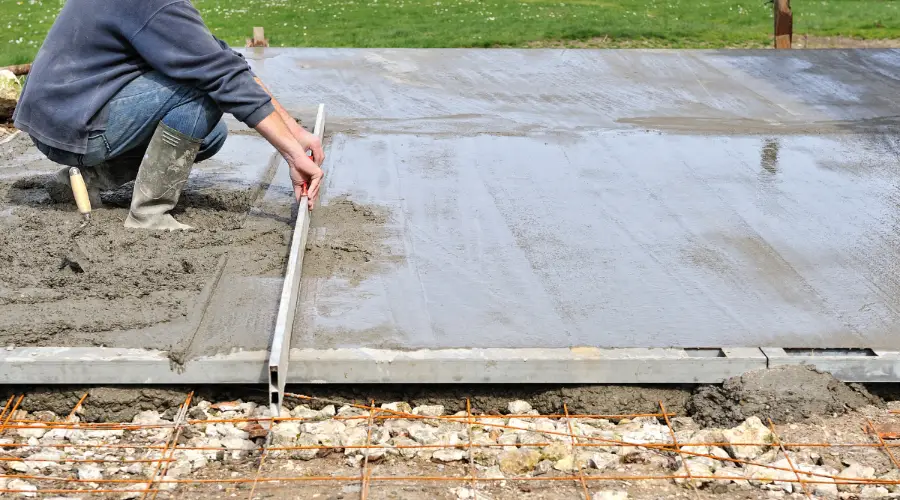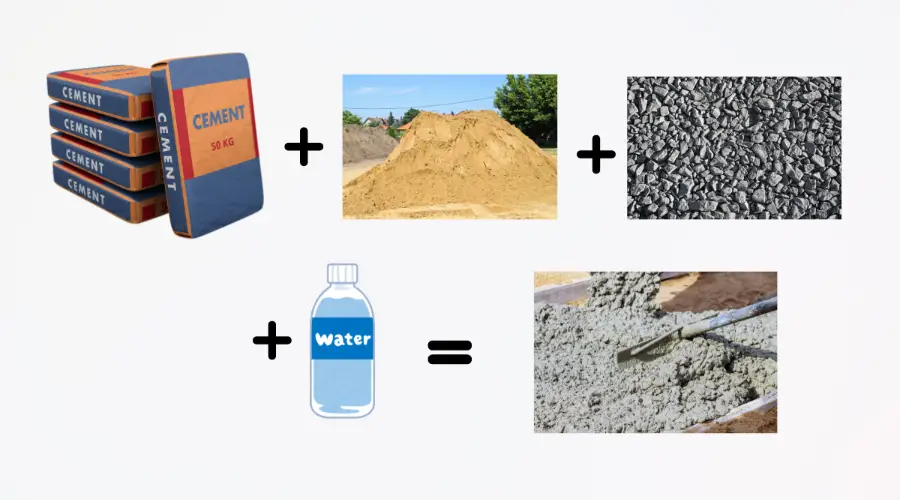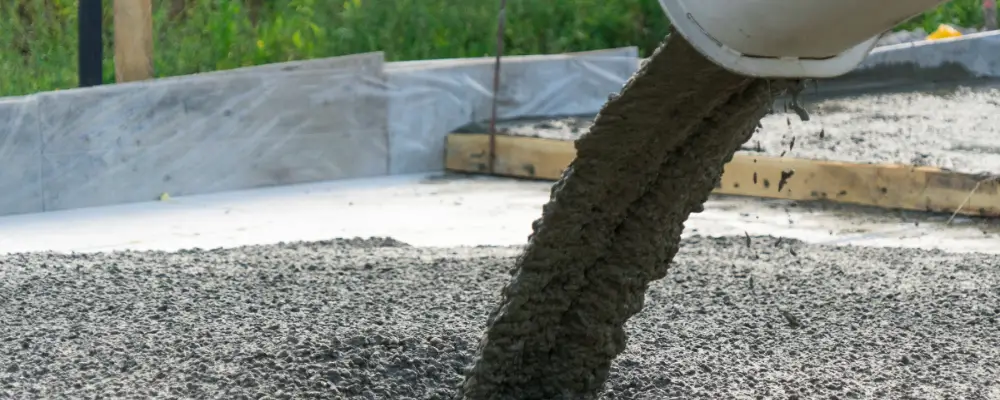Unquestionably, the mixing ratio of concrete provides good structural integrity and workflow. To achieve the required strength and durability, it has many uses and ratios. Depending on the construction requirements, different quantities of concrete are blended. It offers a fundamental degree of strength appropriate for all types of construction.
Concrete is made out of a mixture of many ingredients, such as cement, water, and sand, as well as additional ingredients, such as coarse aggregates (gravel or crushed stone), additives, and admixtures that can be added to get the appropriate paste-like consistency for construction. This procedure can be carried out either manually or using machinery to achieve the ideal ratio for its intended purpose. The overview of concrete ratio for slab, significance, common ratios, and factors will all be covered in today’s Brick & Bolt’s blog.
Overview of Concrete Ratio
The primary constituents of the concrete are sand, cement, and stone or gravel. This procedure entails combining the necessary ingredients in various ratios. For the structures constructed, it offers the intrinsic advantages of strength, durability, safety, and affordability. This mixture often takes longer to harden compared to cement on its own. However, it can be manipulated in many ways to achieve better results.
The concrete mixture’s composition can be altered based on the project’s specifications. The concrete mixture is held together by the cement, which serves as a glue. It works well for creating adaptable and visually appealing structures that meet the demands of the building sector. The varieties of concrete mixtures and their advantages are explained in detail in this article.
Importance of Choosing the Right Concrete Mix for Slabs
The capacity and strength of the concrete poured into the building structure are increased when the concrete is mixed properly and in a suitable proportion. Some of the key points are:
- Structural Sturdiness and Strength
The structure’s strength and durability are derived from the precise ratio of the concrete mixture. It can support large weights without breaking or harming the structure. Additionally, it can withstand natural disasters, extending the structure’s lifespan.
- Economical
Waste is prevented, and the necessary ingredients are simply measured. The size of the project, the kind of concrete you’re using, and the local company’s prices and shipping can all have an impact on costs.
- Decreased Failure Risk
The correct methods for mixing, curing, and strengthening concrete in a building lower the possibility of structural failure. It is crucial to maintain the concrete mix ratio for different applications such as slabs and floors to achieve successful outcomes. The incorrect ratio of concrete may weaken the concrete and lead to cracks or even structural failure.
Common Concrete Ratios for Slabs

Slabs are essential parts of building construction for floors and roofing. For flooring, a typical concrete mix ratio is 1:2:4 (1 part cement, 2 parts sand, and 4 parts coarse aggregates), which guarantees a strong and long-lasting surface. This mixture offers a smooth finish and the required load-bearing capacity. The mixture for slabs needs to be able to support foot movement as well as the weight of equipment and furniture.
Strong and flexible slabs that can endure slight motions without breaking should be produced by the concrete mixture. Appropriate curing is necessary to attain the desired cement consistency. In order to increase the concrete’s strength and durability, this entails adding water and letting it stay wet-mix for a few days.
Step-by-Step Guide to Mixing Concrete for Slabs

Follow the steps to prepare a concrete mix for slabs:
- Prepare the mixture:
Start by mixing the components in the correct ratio, which is 1 part cement, 2 parts sand, and 4 parts coarse aggregate. Make sure to maintain the water-cement ratio, usually around 0.40 to 0.60, to achieve optimal consistency of the mixture.
- Spread out the cement-sand mixture:
Spread the mixture on a level surface.
- Add the coarse aggregate:
Cover the cement-sand mixture with the measured coarse aggregate.
- Blend the components:
Now, combine all the ingredients by hand or with a machine that mixes concrete.
The concrete mixture will then be poured into the structure if the aforementioned procedures are followed. It can be prepared in single batches to expedite the process and meet the immediate construction requirements. The performance of the combination is enhanced by the inclusion of admixtures.
Factors to Consider when Choosing a Concrete Ratio for a Slab
- Strength of Compression
Concrete’s compressive strength is a crucial characteristic that determines how long it will remain solid and hardened. To make sure the water-to-cement ratio is right for the intended mix, it is usually checked after 28 to 30 days. Compressive strength criteria, which are impacted by curing time, temperature, and conditions, are specified by standards such as ISO 456-200, British Standard, and Eurocode.
- Concrete’s Scope of Work
The ease of placing, compacting, and shaping concrete during construction is referred to as workability. Compaction methods, reinforcing spacing, and section size and shape all impact workability. High-workability concrete is necessary for intricate or narrow areas to guarantee correct placement and compaction. Architects and contractors frequently use the slump test to gauge workability.
- Durability
Durability refers to concrete’s capacity to withstand environmental deterioration. Bridges, buildings, and other structures are strengthened and have a longer lifespan when made of durable concrete. A good water-to-cement ratio is essential for durability when high strength is not required. Durability is compromised if the water-to-cement ratio is excessively high.
- Quality Control on-site
Concrete meets the necessary standards through effective quality control. Variations in strength often result from errors in batching, mixing, placing, and curing processes. These issues can be mitigated through proper testing and diligent attention to quality inspections.
- Concrete Structure and Aggregate Size
The maximum aggregate size is determined by the distance between reinforcements. While aggregate size has a direct impact on workability, it has an inverse effect on the water-to-cement ratio. Smaller aggregate sizes are typically utilised for better compressive strength.
Conclusion
Every building project benefits from a carefully planned concrete mix. For better results, you need to select a concrete combination that is robust, high-quality, and reasonably priced. The proper ratio of concrete mix may be determined by skilled construction experts. They guarantee conventional mixing procedures for producing high-quality constructions and have a solid understanding of construction.
FAQ’s
The best mix ratio is 1:2:4 (1 part cement, 2 parts sand, and 4 parts coarse aggregates) for concrete slabs.
When mixing, the concrete must be placed within half an hour to ensure consistency and easy placement. Use a square-headed shovel for a smooth finish and generous placing.
The three types of concrete most frequently utilised in pavement construction are C30, PAV1, and ST 3. Additionally, it is perfect for outdoor paved spaces like patios, driveways, pathways, stables, and garages, as well as for exterior applications that are less demanding, like slabbing.
The specifications of the project often determine the ideal concrete mix for a slab. Nonetheless, 1:2:4 is a frequently utilised ratio. That means one component of cement, two parts of sand, and four parts of aggregate. You have three options: buy Portland cement individually, mix the sand and aggregate yourself, or buy ready-mixed bags

